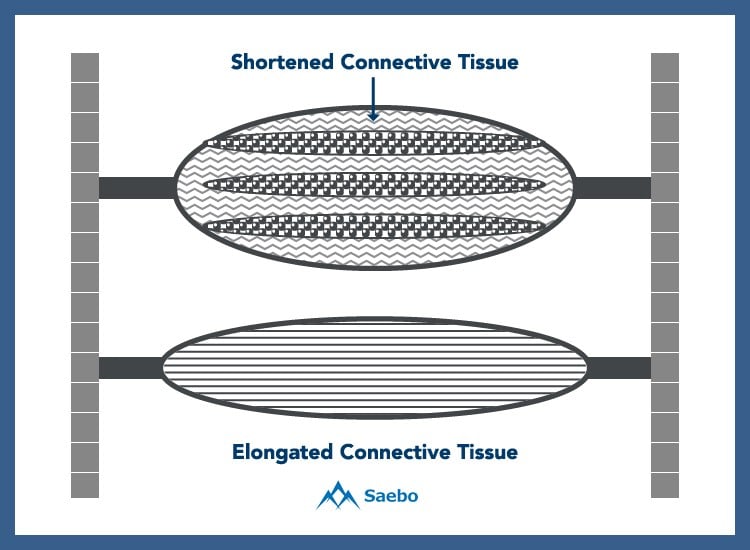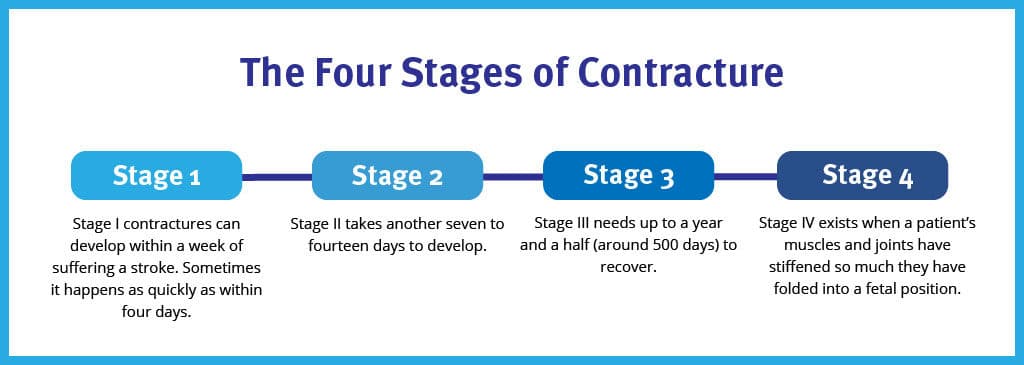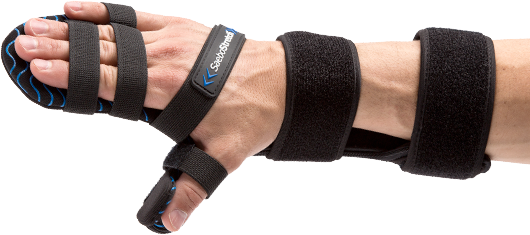Hand Splints and Contracture: What Occupational Therapists Need to Know

Suffering a stroke is debilitating and scary, and survivors are often affected much longer than the stroke itself actually lasts. Many patients experience spasticity and contracture during their stroke recovery period. These ailments affect the muscles of the distressed wrist and hand within days of stroke recovery, which can lead to a painful and permanently clenched hand.
Occupational therapists often treat spasticity using static hand splinting. This slows the quick progression of contractures and may even be able to prevent it from spreading throughout the patient’s hand and wrist. While static splints are commonly used, there has not been enough medical research to know whether or not static splints can prevent spasticity following a stroke. Using a static splint may also lead to joint deformity, pain, and, ultimately, contracture.

Post stroke contracture in a 42 year old patient.
Spasticity
After a stroke, patients may experience an unusual tightening of the muscles in and around the hand, usually on the weaker side of the body. This is called spasticity. Studies show that 20 to 30 percent of stroke survivors experience this condition, and this happens in less than half of those with paresis. Left untreated, spasticity can cause a patient’s joints and muscles to become so tight that it is impossible to move them, which leads to contracture. But by employing the correct medical treatments, therapists can help prevent contracture in their patients.
What is Contracture?
Contracture causes the muscles in the hand and wrist to tighten and shrink, which often causes rigidity and deformity of the joints. Besides strokes, other common causes of contracture include burns, cerebral palsy, muscular dystrophies, and adrenoleukodystrophy.

Progression of Contracture
Contracture can progress very quickly. The initial shortening of muscles and tissue can begin within hours or days of a stroke. As the contracture advances, patients can lose all mobility within the joint. Even small daily acts become increasingly difficult, such as eating and dressing.
The symptoms of contracture vary depending on its severity. There are four stages of contracture symptoms that progress over time. Unfortunately, contracture is not usually diagnosed until Stage III.
The Four Stages of Contracture
- Stage I contractures can develop within a week of suffering a stroke. Sometimes it happens as quickly as within four days.
- Stage II takes another seven to fourteen days to develop.
- Stage III needs up to a year and a half (around 500 days) to recover.
- Stage IV exists when a patient’s muscles and joints have stiffened so much they have folded into a fetal position.

What Can You Do?
As an occupational therapist, your efforts are key in helping your patients understand the challenges and correct treatment of stroke during recovery.
In the past and even today, therapists have treated contractures using static hand splints. It is believed these splints help provide sufficient stretch to the affected soft tissue. Health research suggests that static hand splints are ineffective, an insufficient form of treatment, may cause joint damage and recent studies show negative results materializing from using them.
Dynamic Splinting
What we are finding, however, is dynamic splinting is very effective and can even help reduce side effects caused by static splints, such as joint damage and hypermobility. Dynamic hand splints, like the SaeboStretch, improve range of motion and prevent pain resulting from contracture. They allow for more mobility throughout recovery while providing support and stability for the contracture area.

As a health professional, it’s important to understand the benefits of dynamic splinting. The SaeboStretch splint uses a revolutionary technology that allows the fingers and joints to move through flexion. This helps the fingers relax, which in turn gradually returns the fingers to their natural position. The SaeboStretch, in particular, is highly beneficial for neurologically impaired clients, especially with improving mobility and minimizing joint pain and damage. It is made with energy-storing technology, which allows patients suffering from spasticity and contracture to safely stretch their tight muscles and joints. This results in a greater range of motion and compliance in the affected areas.
Range-of-Motion Exercises
In addition, range-of-motion exercises are the best way to reverse and prevent contracture. These exercises provide stimulation of the muscles and joints, creating more blood flow to the affected area, reducing the risk of blood clots.
Don’t Give Up
It’s safe to say that stroke survivors face many challenges. But that doesn’t mean there isn’t hope. Occupational therapists are a crucial component to treating patients in stroke recovery. You can help mitigate the complications that arise from a stroke and make the recuperation process much easier on stroke survivors.
Soft tissue that has been shortened due to contracture can be lengthened over time with dedicated stretching and range-of-motion techniques.It's recommended that the patients perform a low-load, prolonged stretch for 6 to 12 hours daily which is attainable by using a proper dynamic orthosis. The more the affected limb practices functional use, the better the results will be. There are many techniques that can be implemented to increase mobility throughout the joint. These include passive stretching, manual therapy, serial casting, assistive devices, orthoses, electrotherapeutic modalities, or surgery.
As occupational therapists, it’s important to maintain a clear understanding of the different types of prevention methods available. Treating spasticity and contracture with dynamic splints and stretching is key to helping patients recover. In taking the time to understand the challenges that stroke survivors face, you will be able to treat them with more effective care.
All content provided on this blog is for informational purposes only and is not intended to be a substitute for professional medical advice, diagnosis, or treatment. Always seek the advice of your physician or other qualified health provider with any questions you may have regarding a medical condition. If you think you may have a medical emergency, call your doctor or 911 immediately. Reliance on any information provided by the Saebo website is solely at your own risk.
All content provided on this blog is for informational purposes only and is not intended to be a substitute for professional medical advice, diagnosis, or treatment. Always seek the advice of your physician or other qualified health providers with any questions you may have regarding a medical condition. If you think you may have a medical emergency, call your doctor or 911 immediately. Reliance on any information provided by the Saebo website is solely at your own risk.



